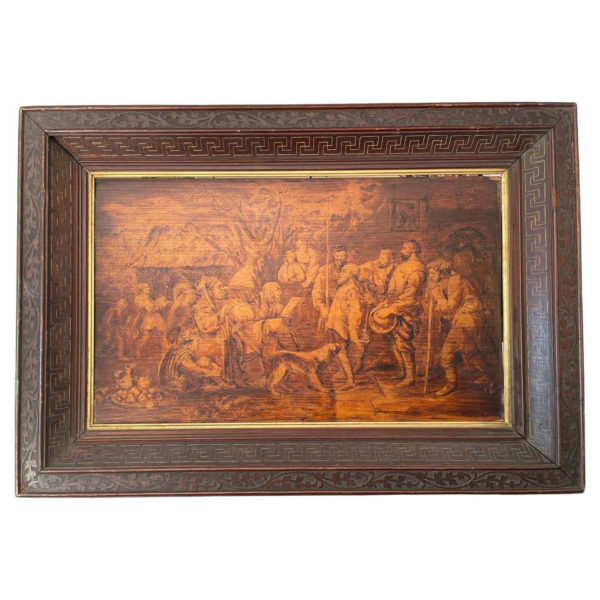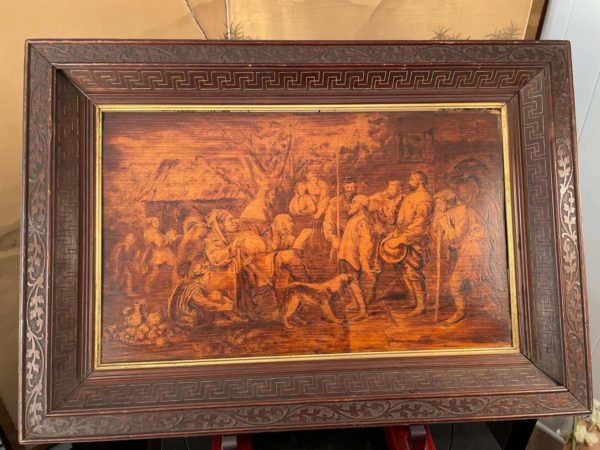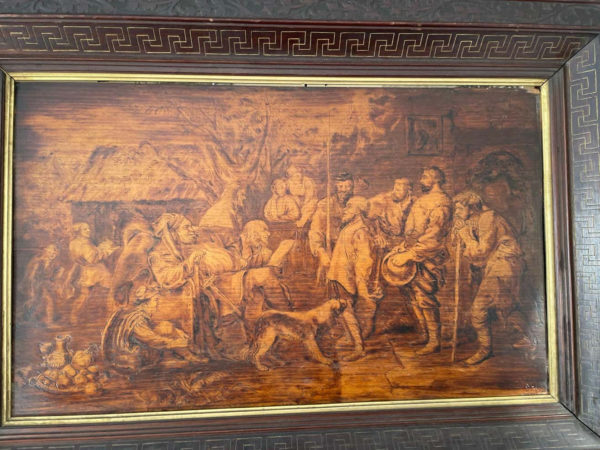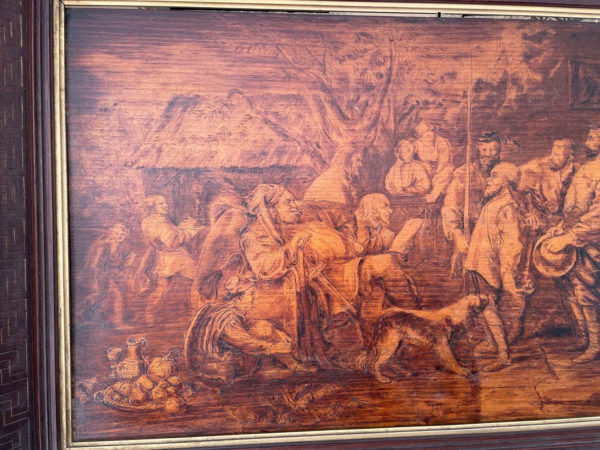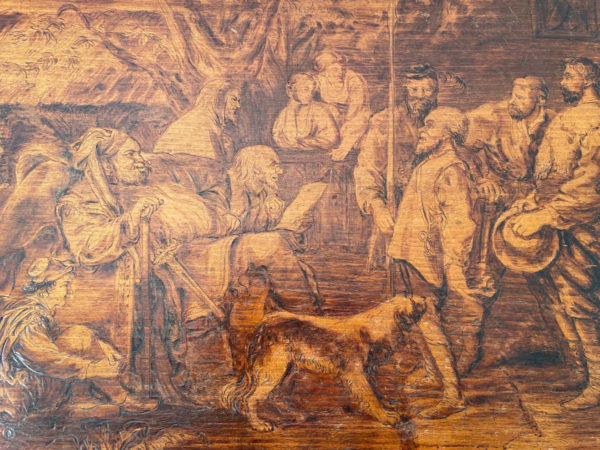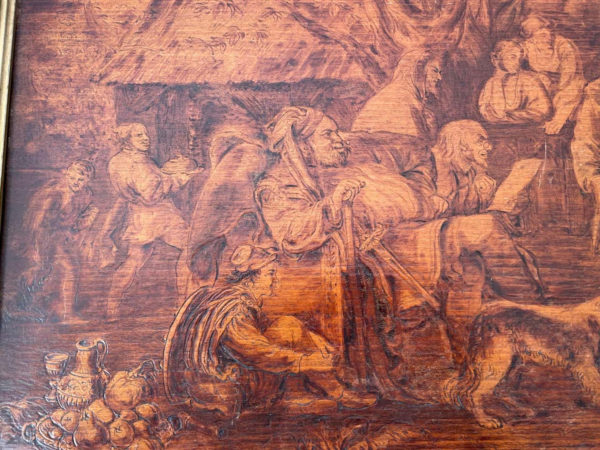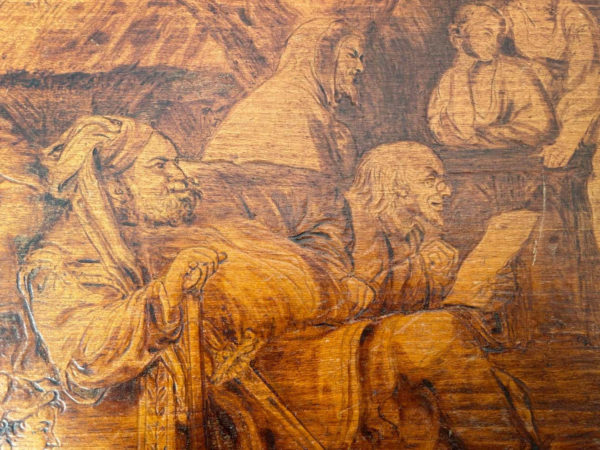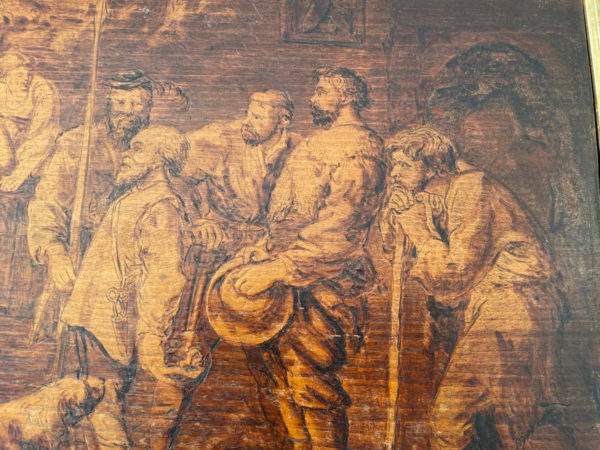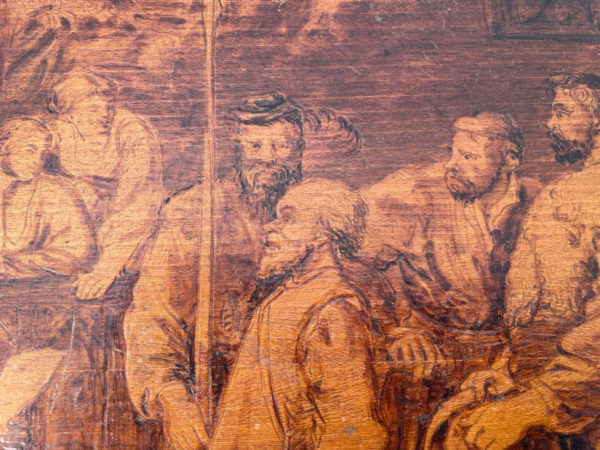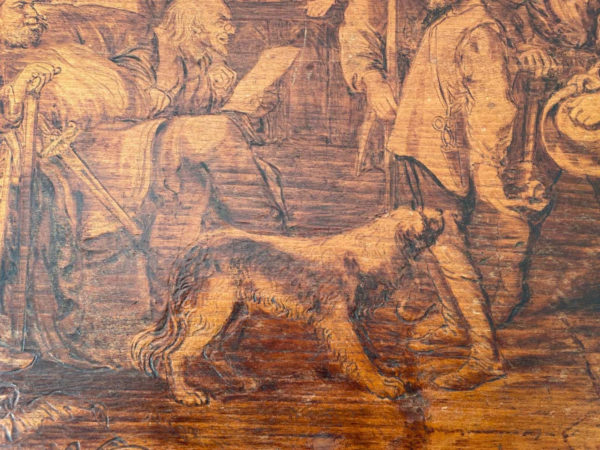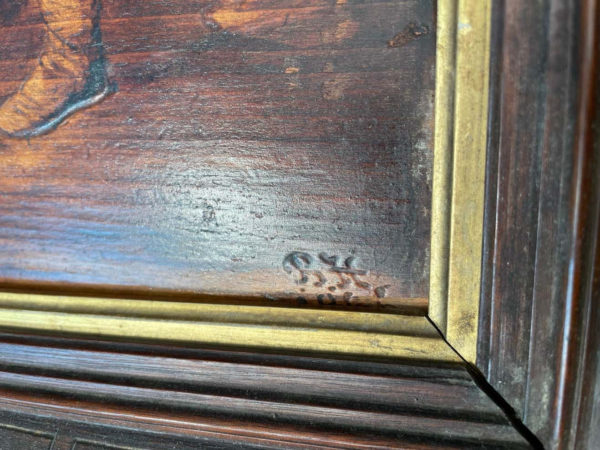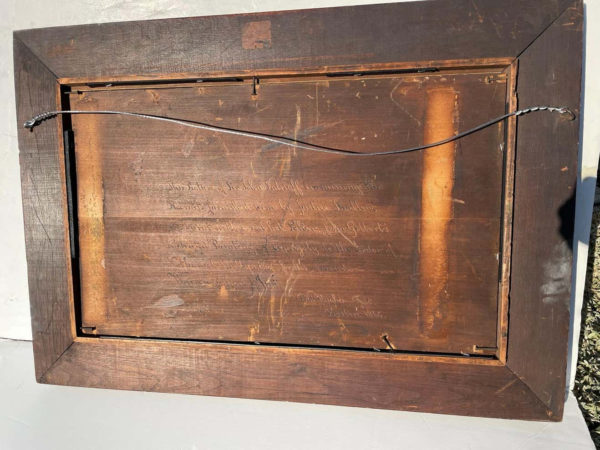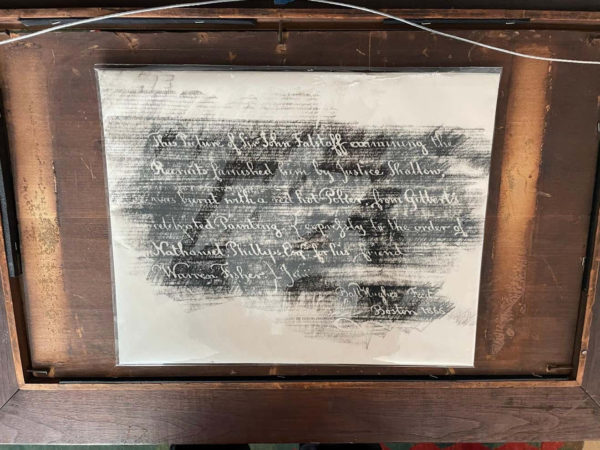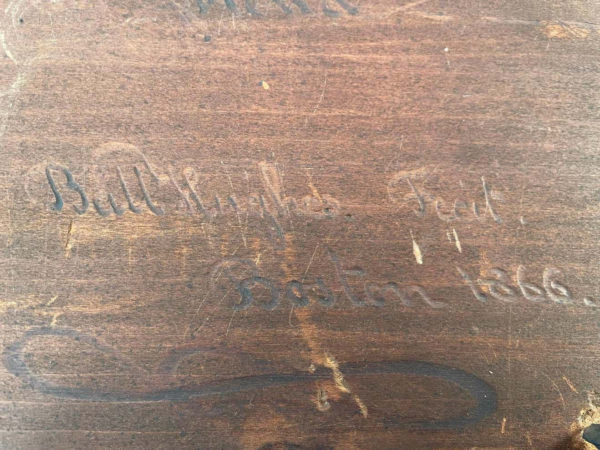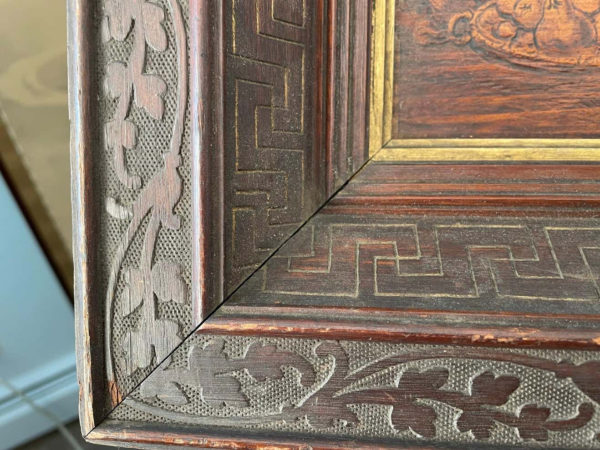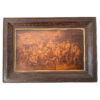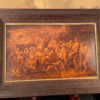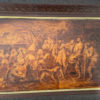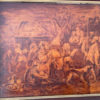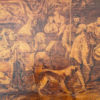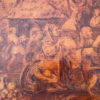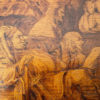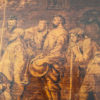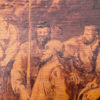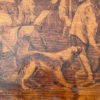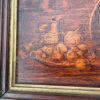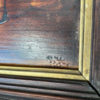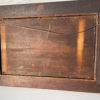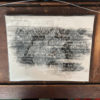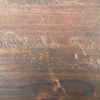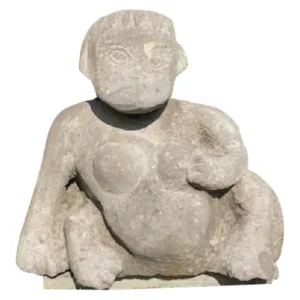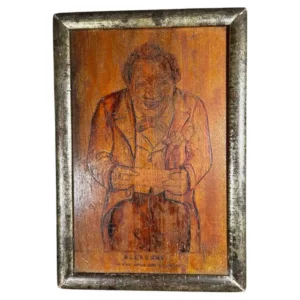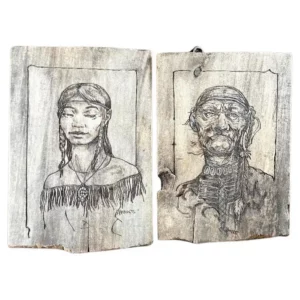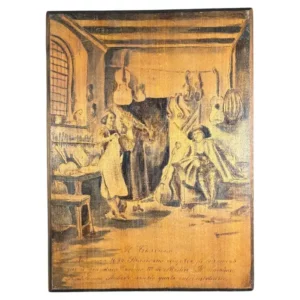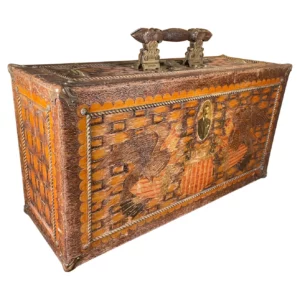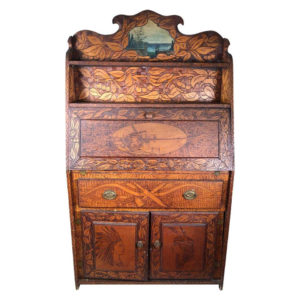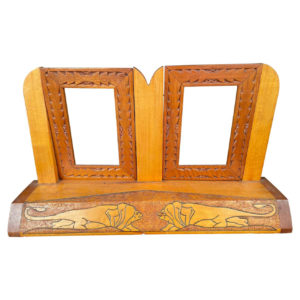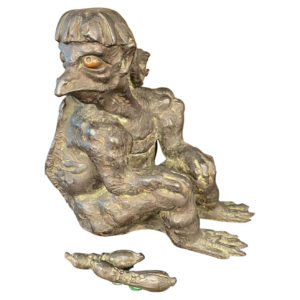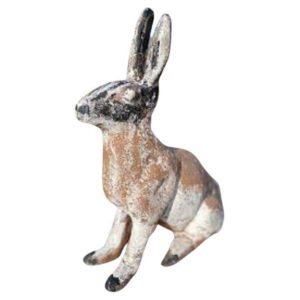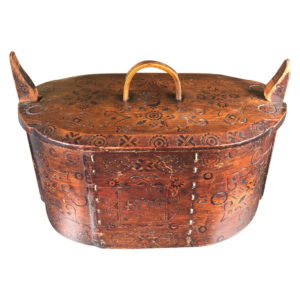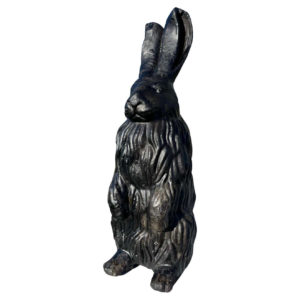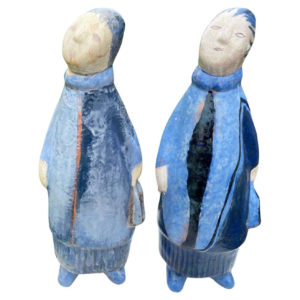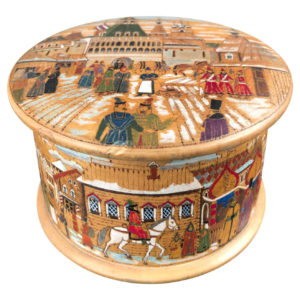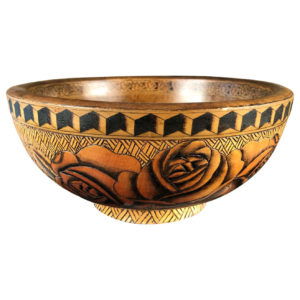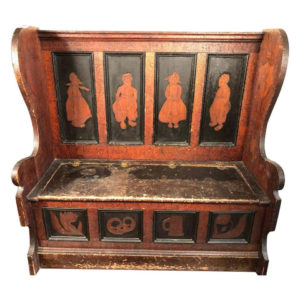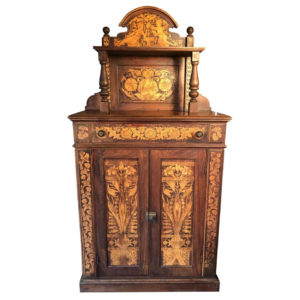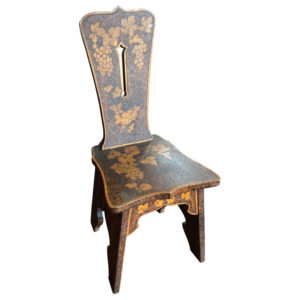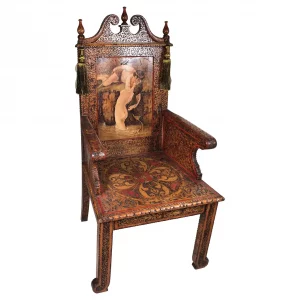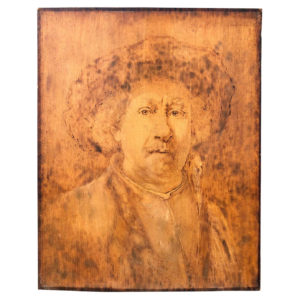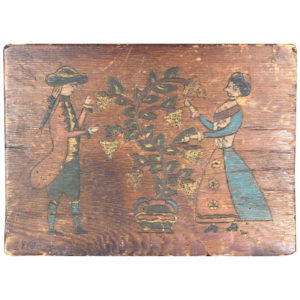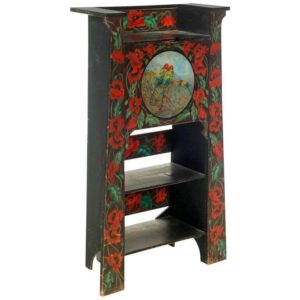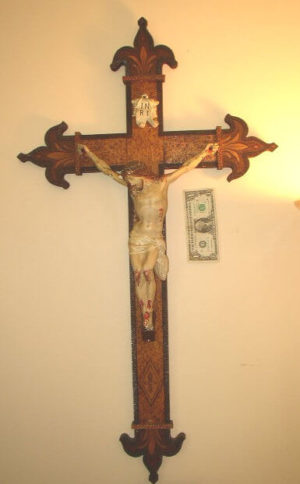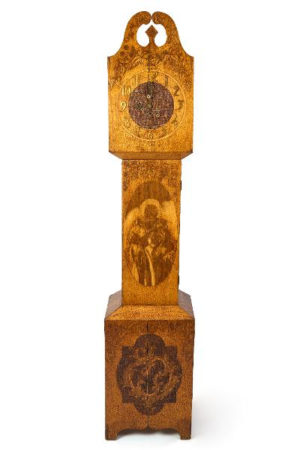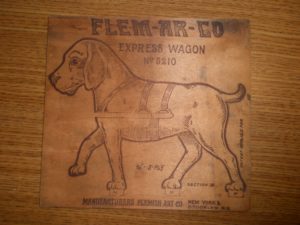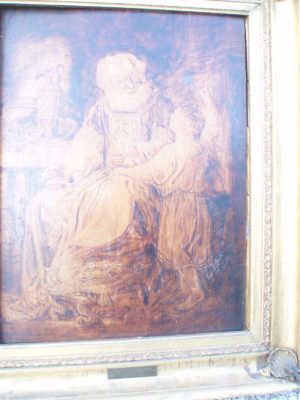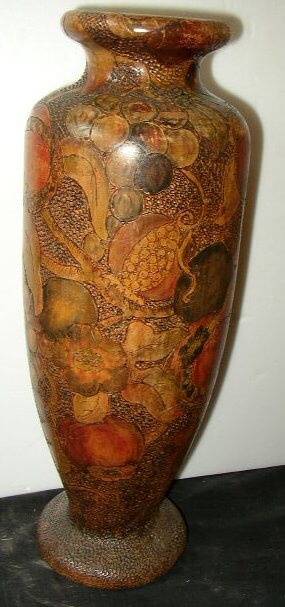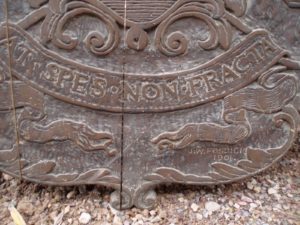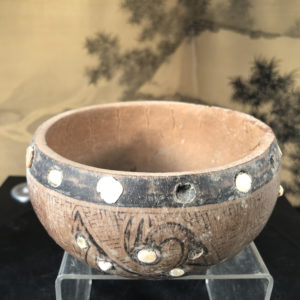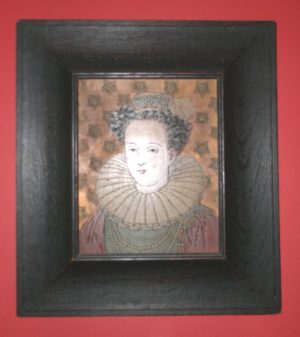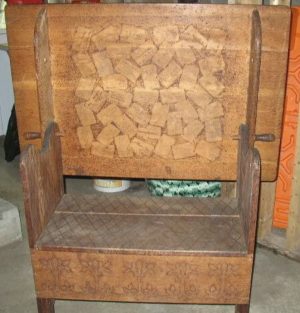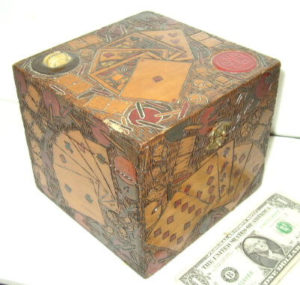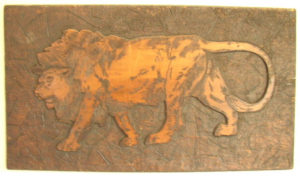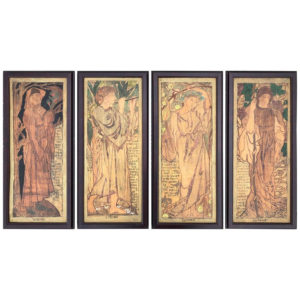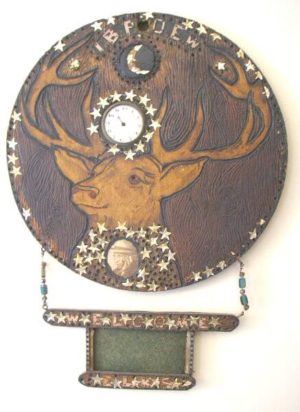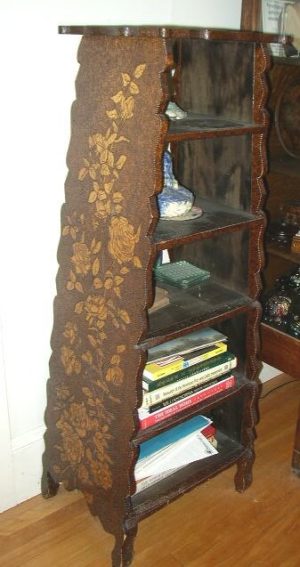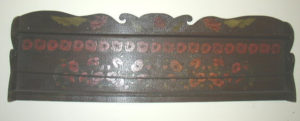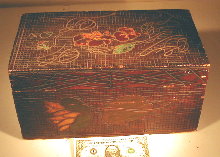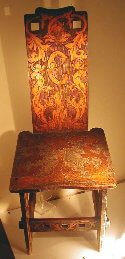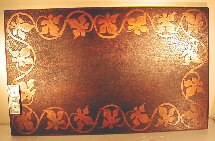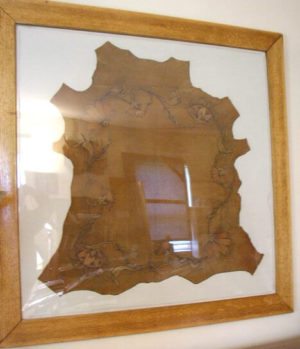Shakespeare’s Sir John Falstaff Examining Recruits 1866, Signed Ball Hughes, 28″w
$3,850.00
Lifetime GuaranteeEmail to a friend
From an important thirty year old New England collection of American Folk Art Pyrography
Robert Ball Hughes (British-American, 1804-1868)
This original period framed 1866 pyrography on wood panel was created after the painting by Sir John Gilbert (English, 1817-1897) with detailed description and dedication written on the back of the panel using the same technique. A photographed rubbing of the reverse dedication will be included and is part of this description (photo).
Frame: 20 inches high and 28.5 inches wide; Site: 13.25 inches high and 22 inches wide
This painting depicts the episode from Shakespeare’s Henry VI Part II Act III Scene V in which
Sir John Falstaff inspects the recruits mustered by Justice Robert Shallow and his
cousin Silence. Falstaff sits in a chair surrounded by his cronies whilst Bardolph leads Bullcalf forward. Hayman’s treatments of Falstaff reviewing recruits are perhaps among the most successful depictions of a theatrical scene in British painting. The tableau vibrates with the energy that he brought to his Vauxhall supper box scenes of games and dancing, and is filled with the humour and observation of his portraiture. Every figure is in motion and proclaims its own individuality.
About Robert Ball Hughes (British-American, 1804-1868)
Known as Ball Hughes and also using that as a signature, this man was a sculptor and wax-portrait artist. He was born in London, England, and died in Dorchester, Massachusetts. He studied and exhibited at the Royal Academy in London as well as at the Pennsylvania Academy of the Fine Arts and the National Academy of Design in New York City. He emigrated to New York in 1829, having earned much prestige in England. In New York, he received many commissions for portrait busts in bronze and wax. Among his subjects were John Trumbull, Alexander Hamilton, and Washington Irving. From 1838 to 1840, he worked in Philadelphia and from 1840, worked in Boston. In his final years, he began to produce pyrographic wood pictures (pyro engravings or “poker pictures”), including The Witches of MacBeth (c. 1840), Babylonian Lions (1856), Don Quixote in His Study (1863), The Trumpeter (1864), General Grant Proclaiming the Surrender of Richmond (1865), The Last Lucifer Match (1865), and The Monk (1866). He also lectured on art. Hughes is buried in the Cedar Grove Cemetery, Dorchester, Massachusetts. The National Portrait Gallery contains Ball Hughes’ busts of Nathaniel Bowditch, Washington Irving, James Kent, John Marshall, and his medallion of John Trumbull.
Provenance: The Estate of Smoki Bacon, Boston, Massachusetts; 2021, Private collection, Boston, Massachusetts.
History of American Folk Art Pyrography
Py·rog·ra·phy, a noun, is the folk art technique of decorating wood or leather by burning a design on the surface with a heated metallic point. Pyrography was particular popular in America and Europe during the last quarter of the 19th century and first quarter of the 20th century.
All works of art are guaranteed authentic and as described.
We have been collecting and dealing in authentic American Folk Art and pyrography works of art for more than thirty years.Our president has authored informative articles on collecting pyrography and has amassed what is believed to be internationally the largest and finest collection of pyrographic folk art which is now being de-accessioned.
Item Details
- Dimensions: N/A
Related Art
(802) 279-7601
(802) 279-7601
(802) 279-7601
(802) 279-7601
(802) 279-7601
(802) 279-7601
(802) 279-7601
(802) 279-7601
(802) 279-7601
(802) 279-7601
(802) 279-7601
(802) 279-7601
(802) 279-7601
(802) 279-7601
(802) 279-7601
(802) 279-7601
(802) 279-7601
(802) 279-7601
(802) 279-7601
(802) 279-7601
(802) 279-7601
(802) 279-7601

